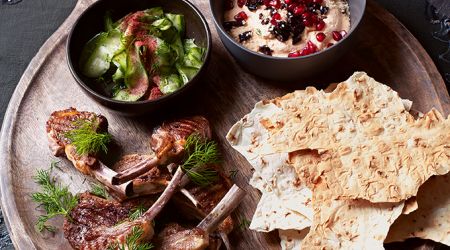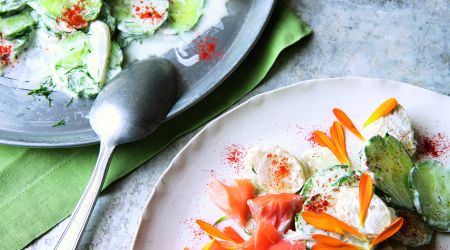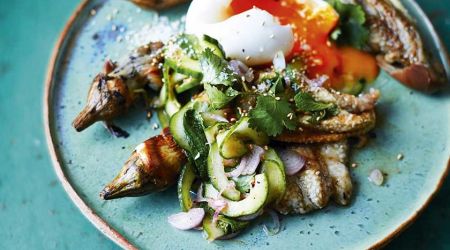Cucumbers
Summer tea parties may conjure up thoughts of dainty cucumber sandwiches but, as Helen Hokin points out, the salad staple deserves so much more, working well with a variety of ingredients.
‘Hallo! Why all these cups? Why cucumber sandwiches? Why such reckless extravagance in one so young? Who is coming to tea?’ Oscar Wilde put cucumber sandwiches centre stage in The Importance of Being Earnest when Algernon devours an entire plate leaving Lady Bracknell without.
At about the same time (1895), the fashion for pausing halfway through the afternoon for a pick-me-up of tea and cucumber sandwiches started to catch on. They were served peeled, thinly sliced and laid delicately in between slices of fresh, buttered white bread – crusts cut off, of course. But apart from a cameo appearance in Wilde’s play and providing a poshmsnack for the Victorian upper crust what, you may well ask, could there be to say about a fruit (yes, technically it is one) that consists of 96 per cent water?
Dig about a bit, though, and it turns out that after 4,000 years they happen to be one of the oldest cultivated crops we know, and come with a rather interesting history. They were first discovered in Asia growing wild on the lower reaches of the Himalayas. So it’s not surprising, given the Indians’ head start on the rest of the world, that a whole repertoire of lovely, refreshing recipes with cucumber – chutneys, relishes and raitas – hail from the subcontinent.
Early traders brought them west via Turkey, where they turned them into cacik, and Greece, where they became the inspiration for tsatsiki, and on into the hands of the Roman Emperor Tiberius. It’s a puzzle quite how anyone could become addicted to cucumber but by all accounts, he did, insisting on having them on the table every day and proving that eating out of step with the seasons was a food crime committed long before supermarkets tempted 20th-century shoppers that way. To get his daily quota, the Emperor made sure they were grown all year round; wheeled on trolleys out into the midday sun, and back indoors again, to be sheltered under roofs of translucent stone – the Roman take on the greenhouse – when it got nippy at night.
In northern Europe we have appreciated its cool, refreshing properties since Charlemagne ordered them to be grown on his Royal Estate, from where their popularity soon spread our way. It’s fallen out of practice now but cucumbers were once cooked and served hot more often than eaten raw. A recipe in The House-keeper’s Pocket-Book of 1739 suggests stewing, coating in flour then frying (yes, in that order) slices of cucumber. What state they would have been in by the time they were poured over roast mutton is anybody’s guess. The closest we come to cooking with cucumber is by making a soup with it, but even that is eaten cold.
Choose cucumbers that are dense and free of dark or yellowing patches. If they’ve never seen a shrink-wrapper, all the better. Cucumbers do not keep well in the fridge, they go soggy, so unless we are lucky enough to have a scorcher of a summer, leave them out. In either case, they should last up to five days. In their prime they should be aqueous and crisp to bite. You can remove the skin, but why bother when it contains most of the nutrients and in summer is unlikely to be bitter anyway?
Cucumbers are surprisingly versatile and needn’t always end up as a chopped afterthought in a last minute salad. They work with butter, chicken, chillies, coriander, crab, cream, cumin, cheese, fish, garlic, ginger, lemons and on through an entire alphabet of sumptuous ingredients that include a few surprises such as oysters, pears and pomegranates, and other stalwarts like salmon, tomato and yoghurt. And then of course in sweltering July, there’s always bread, butter and tea.

Recipes
Get Premium access to all the latest content online
Subscribe and view full print editions online... Subscribe

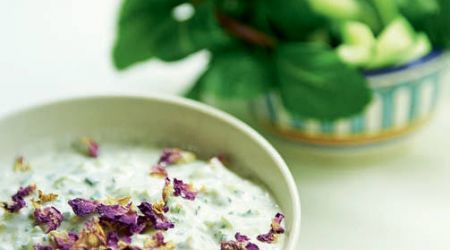
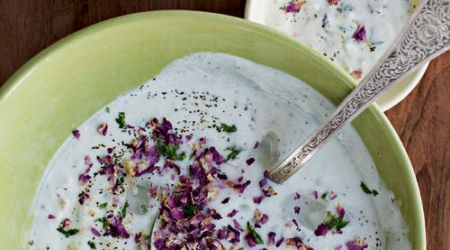
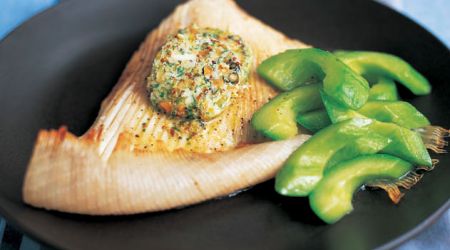
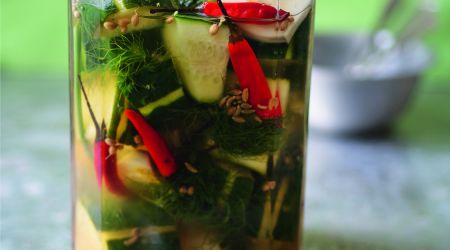
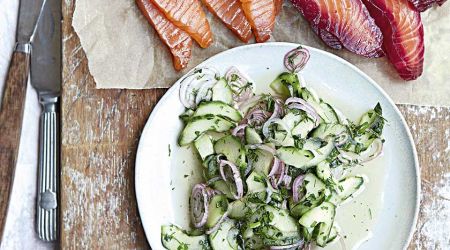
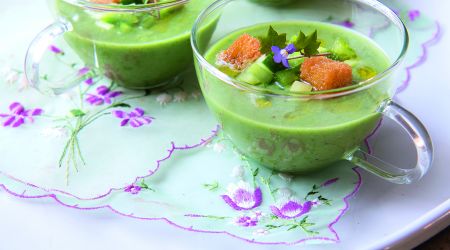

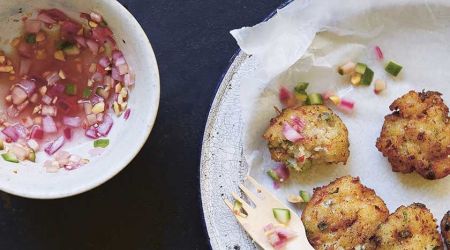

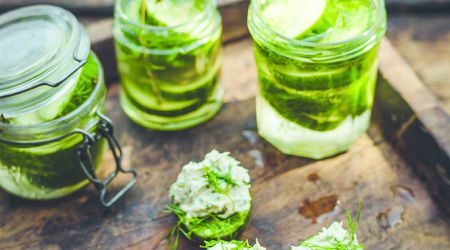

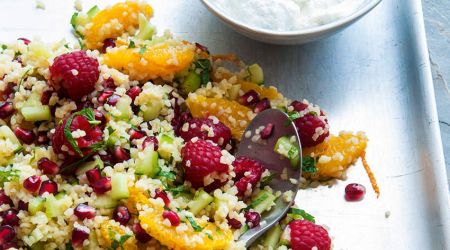
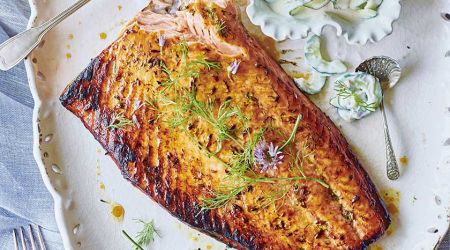
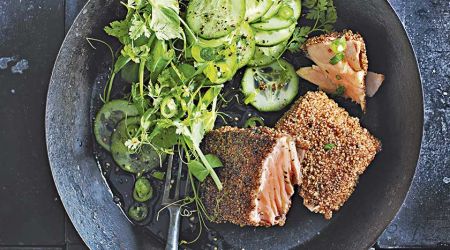
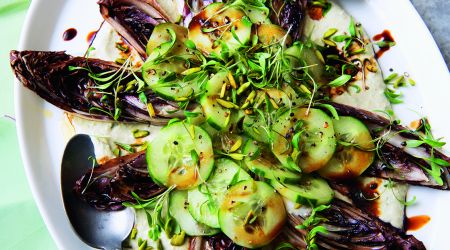

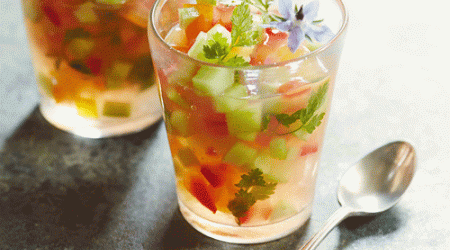
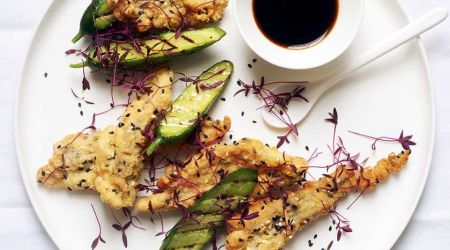
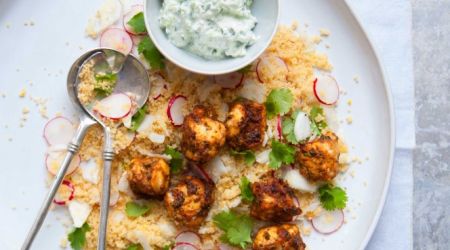
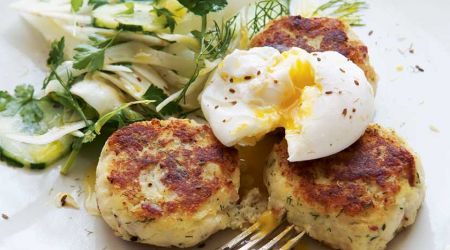
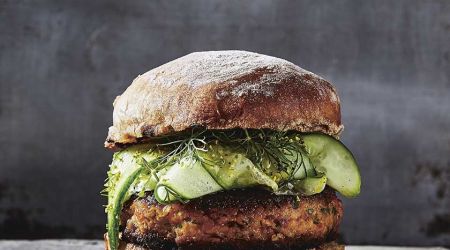


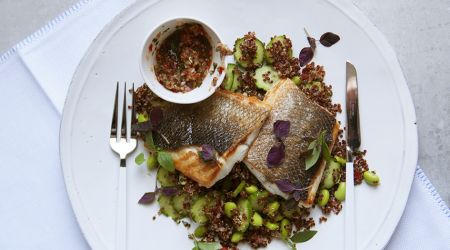
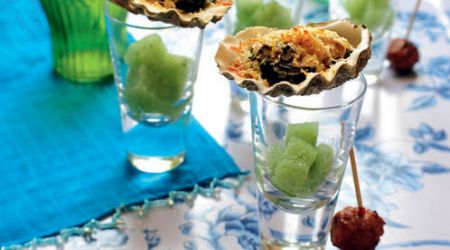

_bc3f3685bee9310b32ee8e27b331ee38.jpg)
